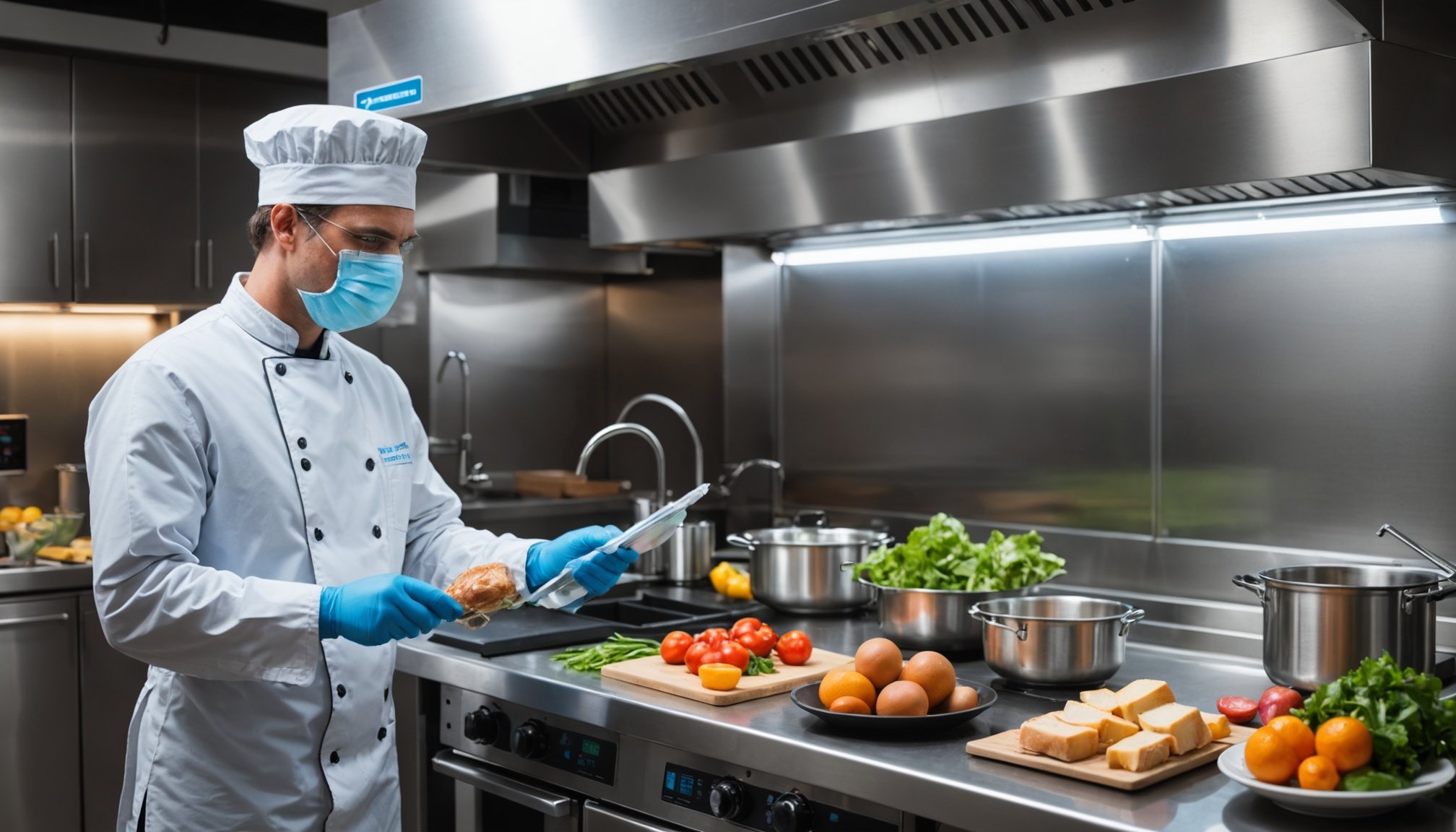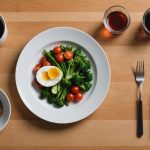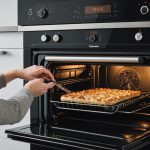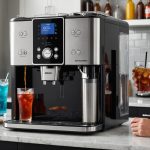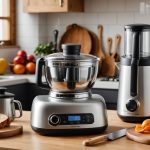Understanding UV Light Sanitation
UV light cuisine sanitation has transformed the landscape of food safety technology. At its core, this technology uses ultraviolet light, specifically UV-C light, to eliminate pathogens. But how exactly does it accomplish this? When pathogens such as bacteria and viruses are exposed to UV-C light, their DNA absorbs the light’s energy, causing irreversible damage. This process effectively inactivates the microbes, preventing them from reproducing and spreading, thus making UV-C light an effective sanitation tool.
When contrasting UV light sanitation to traditional methods, clear differences emerge. Traditional sanitation often relies on chemical disinfectants and physical cleaning, which can be time-consuming and require human intervention. UV light, on the other hand, offers a non-contact, chemical-free alternative, reducing the likelihood of chemical residue on surfaces.
In the same genre : Discover the Top Digital Nutrition Scale for Perfect Macronutrient Tracking in Your Diet-Friendly Kitchen!
Furthermore, UV light can reach difficult areas that might be overlooked with manual cleaning, providing a more comprehensive sanitation solution. This hands-off approach not only enhances efficiency but also mitigates costly errors associated with human fatigue. As more facilities integrate UV-C into their sanitation protocols, it becomes evident that this technology bridges significant gaps left by traditional methods, promising safer dining experiences without compromising rigorous hygiene standards.
Benefits of UV Light Devices for Kitchen Hygiene
UV light benefits significantly in enhancing kitchen hygiene improvement. The introduction of UV light devices in kitchens has revolutionised sanitary practices by reducing harmful bacteria and viruses on surfaces. These devices target microorganisms, breaking down their DNA and rendering them inactive. This mechanism ensures a substantial decrease in contamination risks during food preparation, enhancing overall food safety.
Also to discover : Transform Your Diet: How an Organized, Labeled Pantry Boosts Healthy Eating
Incorporating UV light technology effectively curtails the potential for foodborne illnesses. It provides a chemical-free sanitation method which complements existing kitchen cleaning routines. This results in cleaner and safer kitchens, reducing the likelihood of pathogens surviving traditional cleaning.
Moreover, the constant presence of UV light devices contributes positively to ongoing kitchen cleanliness and maintenance. By regularly using these devices, kitchens remain a less hospitable environment for pathogens. This translates to fewer health risks and supports compliance with hygiene standards.
UV light devices also reassure customers of the establishment’s commitment to health safety. These benefits make adopting UV light technology a compelling choice for kitchen operators aiming to uphold top-tier hygiene. Furthermore, as these devices become more user-friendly, their presence will continue to grow in modern culinary settings, reflecting the evolving standards of kitchen cleanliness.
Practical Applications in Kitchen Settings
Integrating UV sanitation devices into kitchen settings involves understanding the types available and best practices for usage. These devices are pivotal in enhancing kitchen hygiene and maintaining optimal food safety standards.
Types of UV Light Devices
In the realm of kitchen use, several UV light devices are prevalent. Handheld UV wands offer flexibility and spot cleaning, making them ideal for smaller areas. Fixed ceiling-mounted units provide constant coverage for larger spaces, ensuring comprehensive sanitation.
Best Practices for Using UV Devices
Effective usage hinges on proper placement and timing. To maximise sanitation, position devices where bacteria commonly thrive, such as countertops and cooking stations. Consistent exposure is key, so implement regular schedules for UV treatment around food prep times. Always ensure that UV devices do not directly irradiate food items to avoid any adverse effects.
Integration with Existing Sanitation Procedures
Combining UV sanitation with traditional methods can elevate hygiene standards. Begin with manual cleaning to eliminate visible grime, followed by UV light treatment for residual pathogens. This dual approach ensures a thorough sanitation process. Additionally, keep all UV sanitation devices well-maintained to preserve efficacy, enhancing kitchen hygiene and ensuring food safety consistently.
Case Studies and Real-World Examples
Exploring UV sanitation success stories and detailed food safety outcomes provide valuable insights into the practical application of UV light technology in the food industry. Many restaurants and commercial kitchens have successfully implemented UV light sanitation, significantly reducing incidences of foodborne illnesses. A key example is a prominent restaurant chain that incorporated UV sanitation devices, observing a marked drop in contamination-related complaints by over 50%.
Customer testimonials further underscore the technology’s efficacy; numerous establishments reported enhanced hygiene quality and praised the ease of integration with existing kitchen protocols. Patrons expressed increased confidence in dining quality, attributing it to the visible commitment to advanced food safety measures.
Moreover, data supporting these food safety outcomes has been instrumental in advocating for broader adoption of UV light devices. In environments where food safety is paramount, such evidence promotes the reliability of UV solutions over traditional methods.
Adoption of UV sanitation devices demonstrates measurable improvements, making these technologies increasingly attractive to food service operators striving for top-tier sanitation and customer satisfaction. As UV technology continues evolving, its role in kitchen hygiene will likely expand, setting new standards for food safety.
Nutritional Impact of UV Light on Food
Understanding the potential UV light effects on food and its nutritional value is crucial for maintaining quality. Several studies have delved into how food nutrition can be affected by UV light exposure. Generally, UV sanitation targets the microbial surface of food without penetrating deeply, which means it should not significantly impact nutrient content. However, some concerns about nutrient degradation, particularly in sensitive nutrients like Vitamin C, have been noted.
Research indicates that the use of UV-C light as part of food sanitation is relatively safe for maintaining nutritional quality. To address concerns regarding nutrient loss, it is advisable to monitor exposure duration and use UV light primarily on surfaces where microbial contamination risk is highest.
Recommendations to maintain food quality while using UV devices include:
- Limiting direct exposure time to reduce potential nutrient degradation.
- Implementing post-sanitisation checks to ensure nutrient content aligns with standards.
These practices ensure that UV sanitation offers its microbial inactivation benefits without significantly affecting crucial nutrients. While UV light is effective and beneficial, it is essential to balance its use to preserve the nutritional integrity of food.
Guidelines for Safe and Effective Use of UV Light Devices
Ensuring safe application and maximizing the benefits of UV light devices in kitchen sanitation hinges on strict adherence to UV safety guidelines. When used appropriately, these devices are essential in maintaining a hygienic kitchen environment without compromising safety.
Important Safety Measures
- Avoid direct exposure to UV-C light, as it can be harmful to skin and eyes. Operators should ensure that direct light does not contact individuals during use.
- Use protective barriers or safety switches to prevent accidental exposure, especially in environments where UV devices are frequently used.
Maximizing Sanitization Effectiveness
- Strategically place devices in high-risk areas, focusing on spots where bacteria and viruses are likely to thrive. Regular use in these regions can greatly reduce pathogen presence.
- Combine with traditional cleaning. While UV-C is highly effective, combining it with manual cleaning enhances overall cleanliness. Traditional cleaning removes visible debris, allowing UV-C to focus on invisible pathogens.
Addressing Common Misconceptions
Many might erroneously believe that UV light can penetrate and sanitize food internally. However, UV-C treatment is most effective for surface-level sanitation, ensuring food preparation areas remain uncontaminated. Understanding these principles helps integrate UV technology into kitchen routines effectively.

